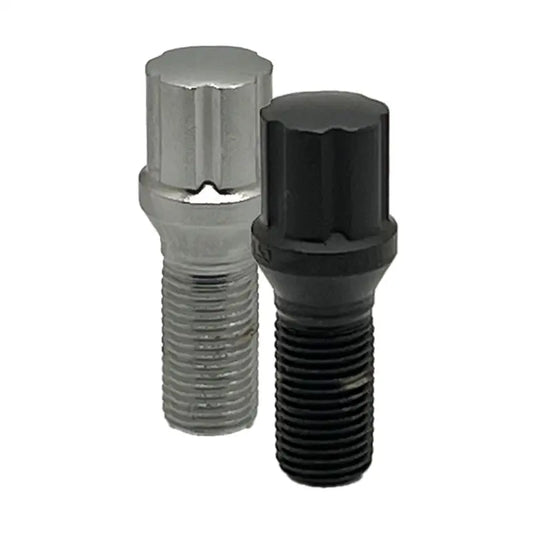Essential Tools for Changing a Flat Tire: Be Prepared Before Disaster Strikes
Getting a flat tire is never convenient, but being properly prepared can turn a potential roadside emergency into a manageable situation. This guide covers critical preparation steps, from understanding wheel lug nuts to assembling a complete emergency kit.
Understanding Your Wheel Nuts: A Critical Safety Component
Before diving into emergency supplies, let's address a crucial component: your vehicle's wheel lug nuts. If your car has factory (OE) wheels, you're likely dealing with two-piece lugs nuts that could fail when you need them most. This lugnut design often fails due to moisture and temperature changes causing corrosion. The outer cap swells, making removal nearly impossible during emergencies.
One-Piece OE Replacement Lug Nuts: The Factory Wheel Solution
For factory wheels, upgrading to one-piece OE replacement lug nuts eliminates swelling issues while maintaining proper fitment. Look for:
- Single-piece construction
- Matching thread, seat and overall design
Aftermarket Lug Nuts: Quality Matters
If you've upgraded to aftermarket wheels, you'll need compatible aftermarket lug nuts. Always select high-quality options that feature:
- Heat-treated and cold-forged construction for maximum durability
- Precise threading and seat angles matching your wheels
- Superior metal to prevent stretching and wear
- Proper length and thread pitch for your specific application
Investment in quality aftermarket lug nuts, particularly heat-treated and cold-forged variants, provides the best long-term reliability and safety for aftermarket wheel setups.
Essential Emergency Kit Components
Core Tire-Changing Tools
- Properly sized tire iron or socket wrench for your lug nuts
- Calibrated torque wrench (crucial for proper installation)
- Vehicle jack in good working condition
- Full-size spare tire or temporary spare (check pressure monthly)
Support Equipment
- Tire repair kit for minor punctures
- Portable power tire inflator
- Jumper cables or compact jump starter
- Tow straps
- Multi-tool for unexpected needs
Safety Equipment
- Bright flashlight or headlamp
- Reflective warning triangles or flares
- Work gloves
- Small tarp or kneeling pad
- High-visibility safety vest
- Basic first aid kit
Proper Installation Matters
Using a torque wrench is essential. Over-tightened wheel nuts can damage studs; under-tightened ones risk wheel separation. Always follow your vehicle's manual for correct torque specifications.
Monthly Maintenance
Establish a routine to verify:
- All tools are present and functional
- Spare tire maintains proper pressure
- Jack operates smoothly
- Electronic devices have power
- Tire repair supplies haven't expired
Roadside Assistance Considerations
If you're uncomfortable changing a tire, professional roadside assistance is usually the safest option. However, keep in mind that cell service isn't guaranteed everywhere. Having a complete set of proper tools becomes especially important in remote areas where help may be limited to passing motorists. When properly equipped, you ensure you can handle emergencies alone or provide proper tools to Good Samaritans when outside service areas.
Final Thoughts
Being prepared for a flat tire requires more than just keeping a spare in your trunk. By upgrading your lug nuts and maintaining a proper emergency kit, you transform a potential crisis into a manageable situation. Take time now to assess your preparation level – it's an investment in your safety and peace of mind.

